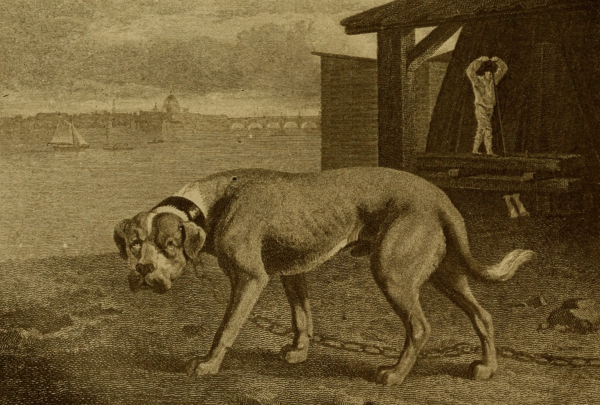
Who doesn’t love a good spooky story?
This one starts in the midlands of Ireland where there is a historic limestone outcrop that includes the ruins of a castle. The legendary fortress is known as the Rock of Dunamase and it dates back to the 9th century. Some of Ireland’s most significant historical legends are associated with the site because it is said to be a “thin place,” a sacred site where the veil between this world and the next is so fine as to allow interaction with the spirit world. The Rock of Dunamase banshee, for instance, is said to roam the nearby Clopook Cave, a female spirit whose haunting wails have been heard by local who describe the screams as “like a hare being killed.”
Vivid.

Photo of the Rock of Dunamase by Kent Clemmons – Own work, CC BY-SA 3.0, https://commons.wikimedia.org/w/index.php?curid=15988367
There is also the legend of the Fiery Guard Dog, an Irish ghoul, a hell hound,” if you will, whom locals call “Bandog.” Bandog, who protects buried treasure beneath the Rock of Dunamase, was described by some as a fearsome half-dog, half-dragon beast with gaping jaws from which fiery flames emerge. Others have reported the dog to be a huge, jet black Mastiff there to warn away anyone seeking the hidden riches. Since no one has found the treasure, it seems that Bandog has been successful.
We should note that several “olde English” sources refer to Mastiffs as bandogs or bandogges, but technically, the term in those days meant a dog that was tethered by a chain (or “bande”) only to be released at night for guard duty. At one time, some sources say, the terms “mastiff” and “bandog” were often used interchangeably.
There is another kind of “banddog,” a dog we’ve seen referred to as the Australian Bandog, American Bandogge Mastiff, or simply American Banddogge. We saw one “breeder” advertise her puppies as “purebred” Amerian Banddogges, and though we are a purebred dog centric site, we thought it might be time to talk about this.
No established registry recognizes these dogs. Banddogs do not have a unified breed standard, and were developed by crossing mastiffs or mastiff-type dogs with Bulldog or terrier breeds to create a powerful and tenacious dog to guard property and for protection work. In short, they are not a specific breed but rather a type of dog, and are no more a purebred dog as recognized by the AKC, FCI, etc than is a cur. Mind you, there is a breed called the Mountain Cur which is currently part of the AKC’s Foundation Stock Service, but “cur” by itself is more of a type, and less of a breed.
What is a purebred dog?
One whose ancestry can be traced back several generations within the same breed, with no crossbreeding or mixing with other breeds. A dog that is the offspring of two parents of the same breed, one who meets a written breed standard established by the breed’s parent club. Purebred dogs are the result of controlled breeding programs aimed at preserving and improving the breed’s characteristics and are bred by breeders who carefully select a sire and dam with desirable traits and genetic backgrounds to produce offspring that meet that same breed standard.
The topic is ripe for discussion as many will ask why something like the Labradoodle which has been around for years isn’t accepted by the AKC. We caution that this post is about the banddogge. We’ll go so far as to mention that while there is the Australian Labradoodle Association of America which maintains a breed registry and seems focused developing consistent breeding within their own association, there is no national breed club to our knowledge that is actively pursuing AKC recognition at this point – but who knows, perhaps one day, that will change.
We circle back to the Amerian Banddogge and conclude with the warning, buyer beware. At present, there is no such thing at present as a purebred American (or Australian) Banddogge, let alone an established registry that recognizes them.
Image: The Mastiff by Philip Reinagle, 1805, from public domain
